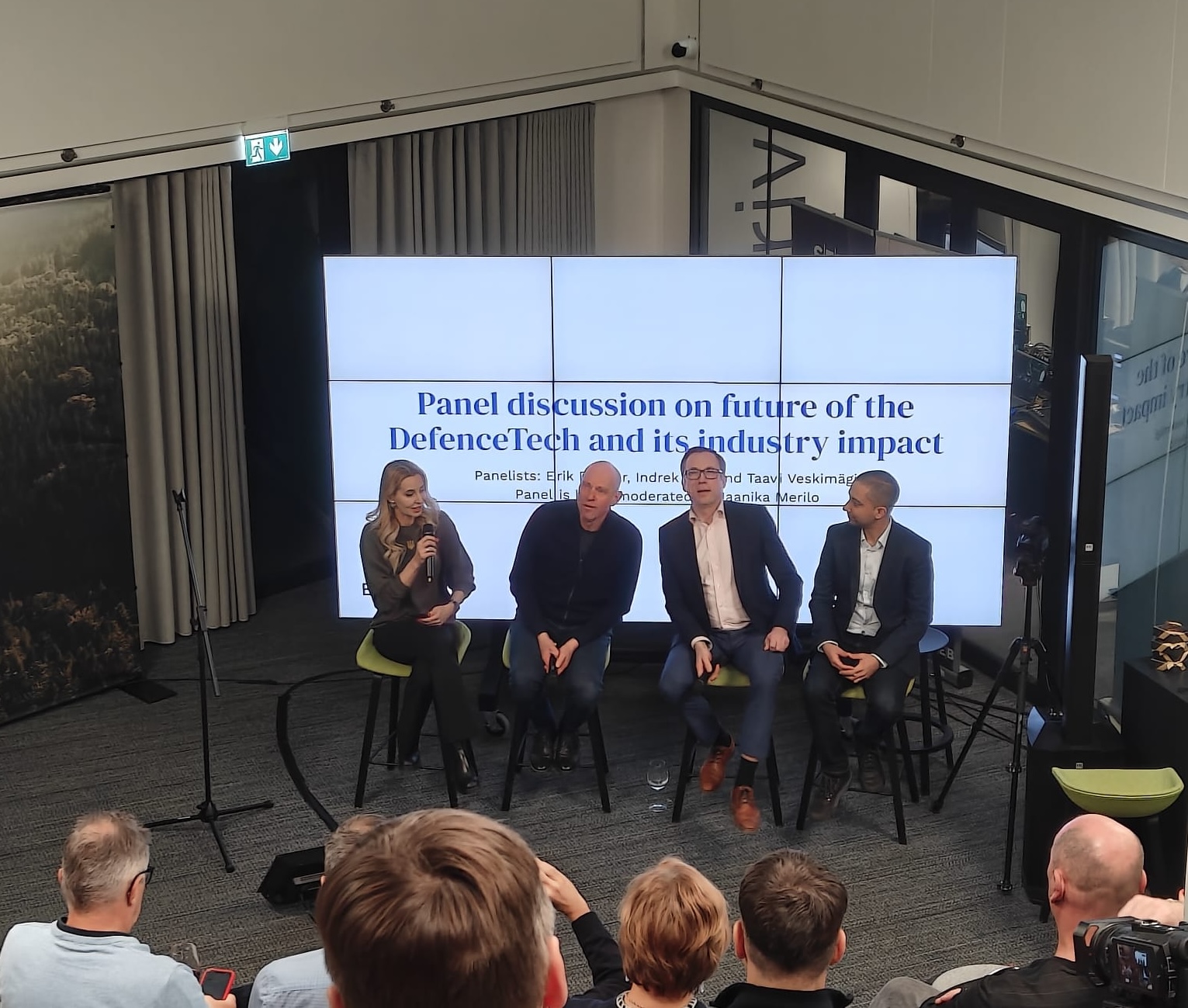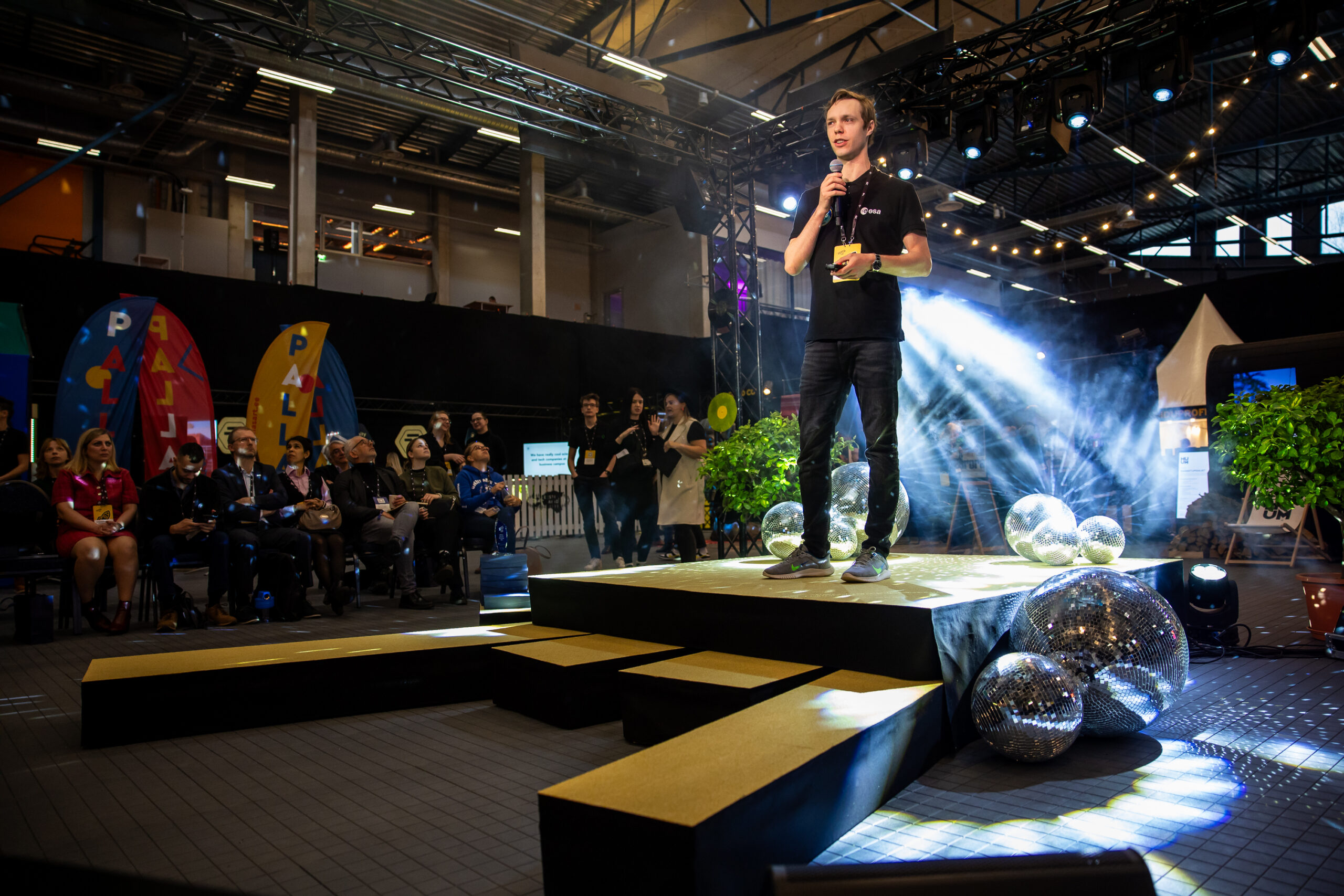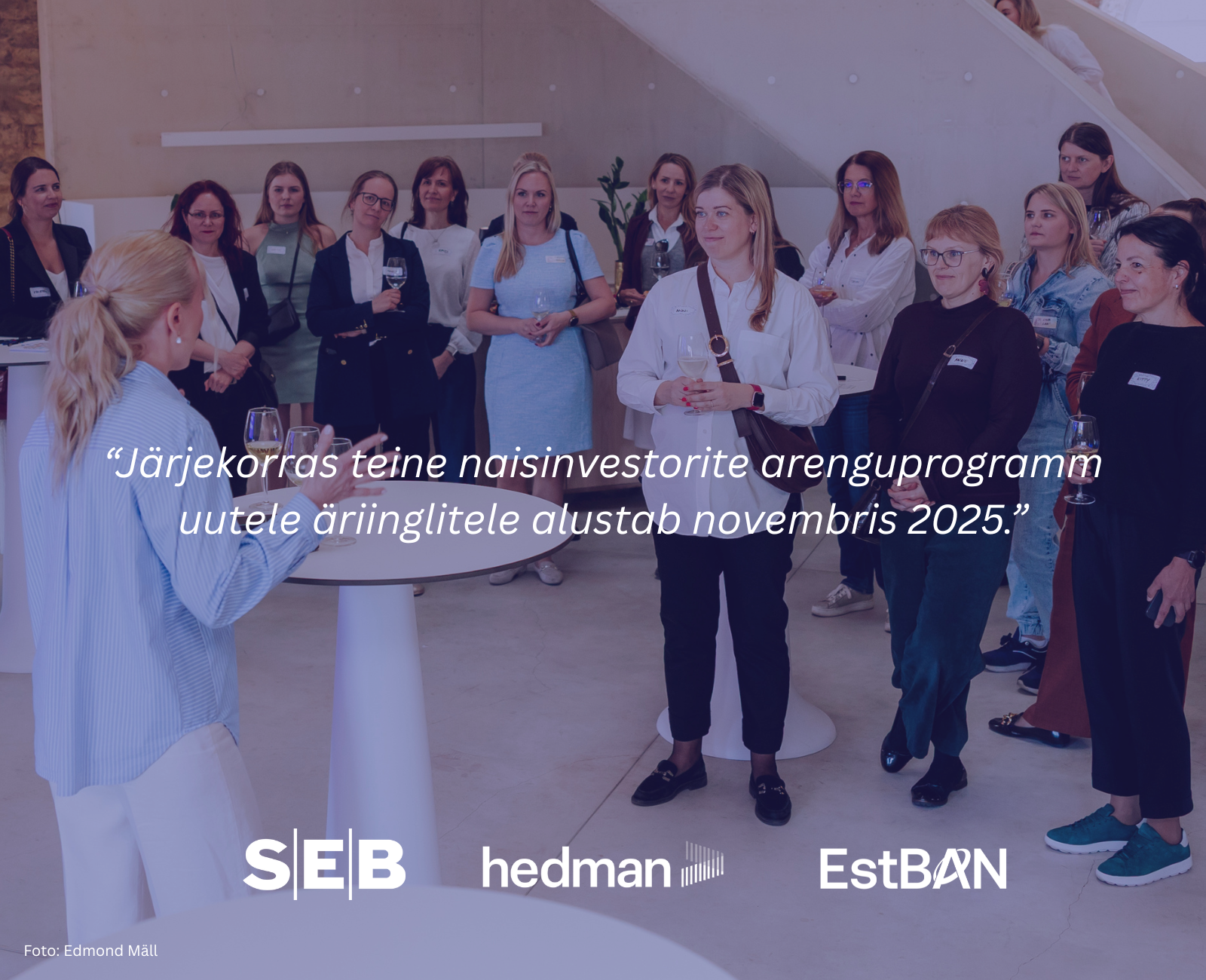At a recent EstBAN pitch event where only defence-tech startups were invited to pitch, we also hosted a panel discussion on the topic. The conversation was moderated by Jaanika Merilo and the focus was clear: defence tech is no longer a fringe sector. Once considered off-limits or too complex, it has now become a strategic and investable vertical, driven by shifting geopolitical realities, rising defence budgets, and rapid innovation cycles.
The panel featured respected voices in the field: Taavi Veskimägi, Chair of the Estonian Defence and Space Industry Association; Indrek Sirp from the Estonian Ministry of Defence; and Erik Bhullar, Partner at BSV Ventures. Together, they offered a candid look at what makes defence tech exciting, where the opportunities lie, and how investors – particularly angels – can engage meaningfully in this evolving space.
A new narrative around investing into defence
Erik Bhullar opened with a perspective that challenged old assumptions. For years, defence was treated as a “vice sector,” grouped with industries like tobacco or gambling. But times have changed. – “We never really shied away from defence,” Bhullar said. “Like the Zen quote goes: Walk softly, but carry a big stick. That mindset is especially relevant in today’s world.”
BSV Ventures operates as a dual-use fund, meaning they look for commercial and defence applications side-by-side. Nearly 40% of their current portfolio has defence relevance.
From impact to battlefield
For Taavi Veskimägi, defence investing is deeply linked with impact. But not in the typical ESG sense, his idea of impact is about effectiveness on the battlefield. – “There is no defence without offence,” he said. “If you consider yourself an impact investor, you should be ready to invest in technologies that can have a real, even lethal, effect on the battlefield.”
This statement underscores a growing awareness that strategic autonomy and deterrence come from technological capability, and investors have a role to play in building that.
What role does the state play?
Indrek Sirp gave a perspective from the government’s side. His day-to-day mission is clear: Estonia is actively building an ammunition manufacturing industry and broader defence industrial base. With significant government investment – such as a €50 million commitment to a new defence industry park, the goal is to make Estonia an attractive hub for both local and international defence companies. Sirp emphasized the importance of combining legacy systems with modern software and AI to stay relevant on the battlefield.
“Even technology from the 1960s can still be highly effective when matched with smart software,” he noted. “You need both hardware and software – there’s no winning without kinetic impact.”
Lessons from Ukraine
The panel returned often to the war in Ukraine, not just as a geopolitical backdrop, but as a real-time laboratory of innovation. Ukrainian teams iterate drones and defence tech in 24-48 hour cycles, a pace almost unthinkable in traditional EU systems.
Bhullar noted that Ukraine’s ability to rapidly develop and test new solutions is a wake-up call for Europe.
“The product development loop in Ukraine is real-time,” he said. “It’s fast, messy, and effective. In Europe, we have a lot to learn if we want to keep up.”
Veskimägi agreed, noting Estonia’s ambition to make its own defence innovation environment more agile and test-ready, not just for domestic use, but to support exports as well. He stressed that any Estonian defence startup must be global from day one.
What should business angels be looking for?
When asked what they’d invest in right now, panelists gave concrete answers:
- Sirp pointed to air defence, ballistic missile defence, and long-range strike capabilities, including drones in the air, at sea, and on the ground.
- Bhullar highlighted a recent investment €650K round that BSV Ventures led in Wayren, an Estonian startup developing critical integration and communication systems for the field – key infrastructure for command and control in modern defense.
- Besides participating also in the Wayren investment round, Taavi Veskimägi had recently closed a €500K investment into Alpine Eagle, a German anti-drone software platform. Veskimägi reiterated the need to back solutions that have clear defense value and can scale across Europe, not just within Estonia.
They all agreed: Europe’s defence market remains fragmented, but collaboration and bridge-building across NATO and EU states can turn that into a strength, with the right regulatory and ecosystem support.
The Big Picture: Strategic Tech and European Resilience
Bhullar concluded with a reminder that strategic defence investment isn’t just about weapons systems. – “Why is the U.S. military so dominant? It’s not just missiles, it’s supply chains, logistics, and integration. These are also investable areas, and Europe needs to catch up.”
Meanwhile, Sirp pointed to the European Commission’s white paper that now considers resilience and defence as part of ESG, a potential game-changer for larger funds previously hesitant to enter the space.
The discussion wrapped with a final challenge to investors: understand the nuances of defense tech, engage with the ecosystem, and don’t wait for perfection. Innovation, especially in this space, demands urgency. – “There’s no such thing as Estonian deterrence alone, it’s European deterrence,” said Veskimägi. “We need to build this together.”




